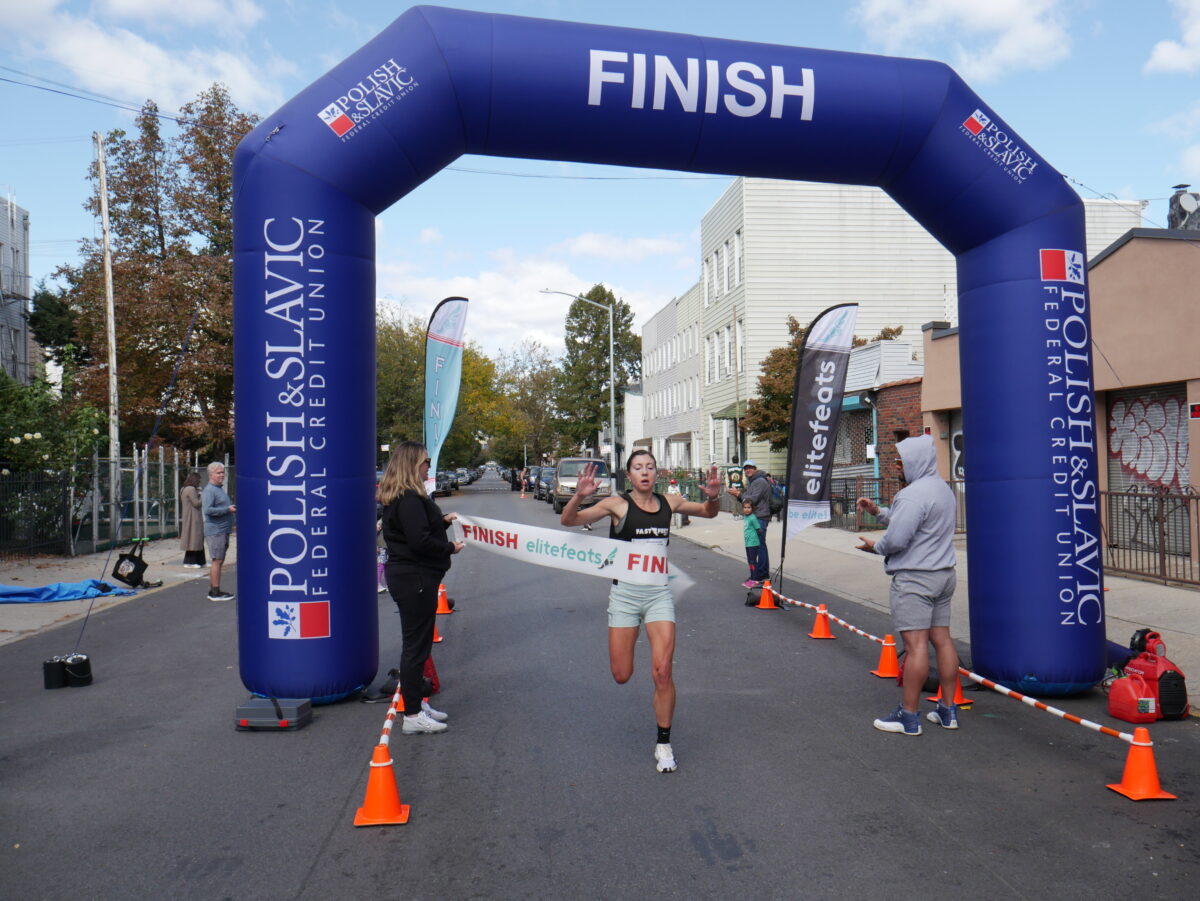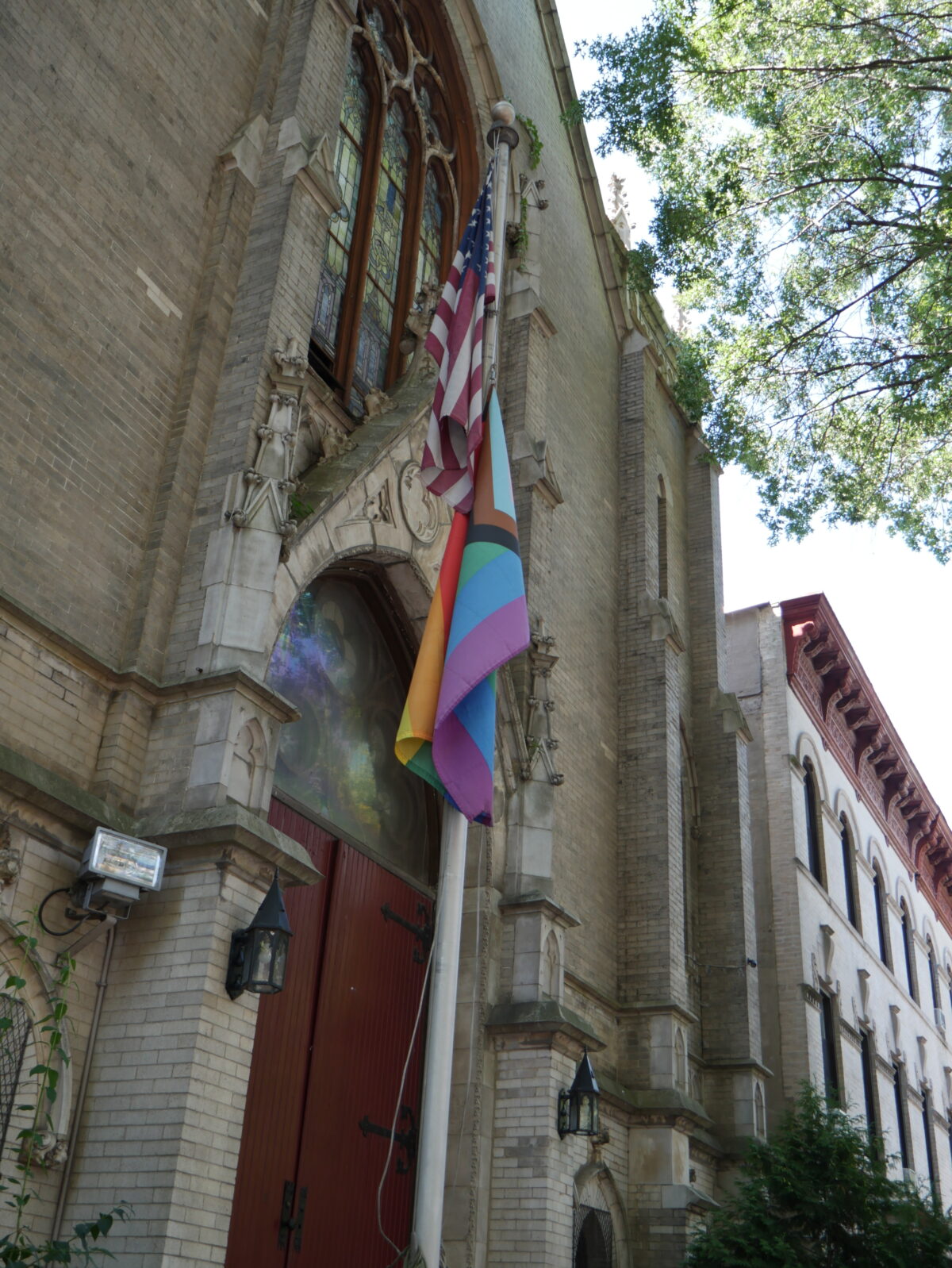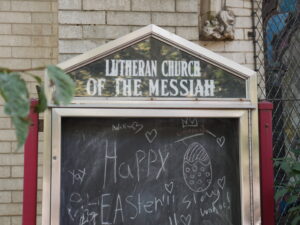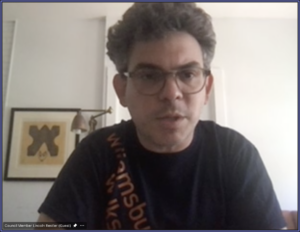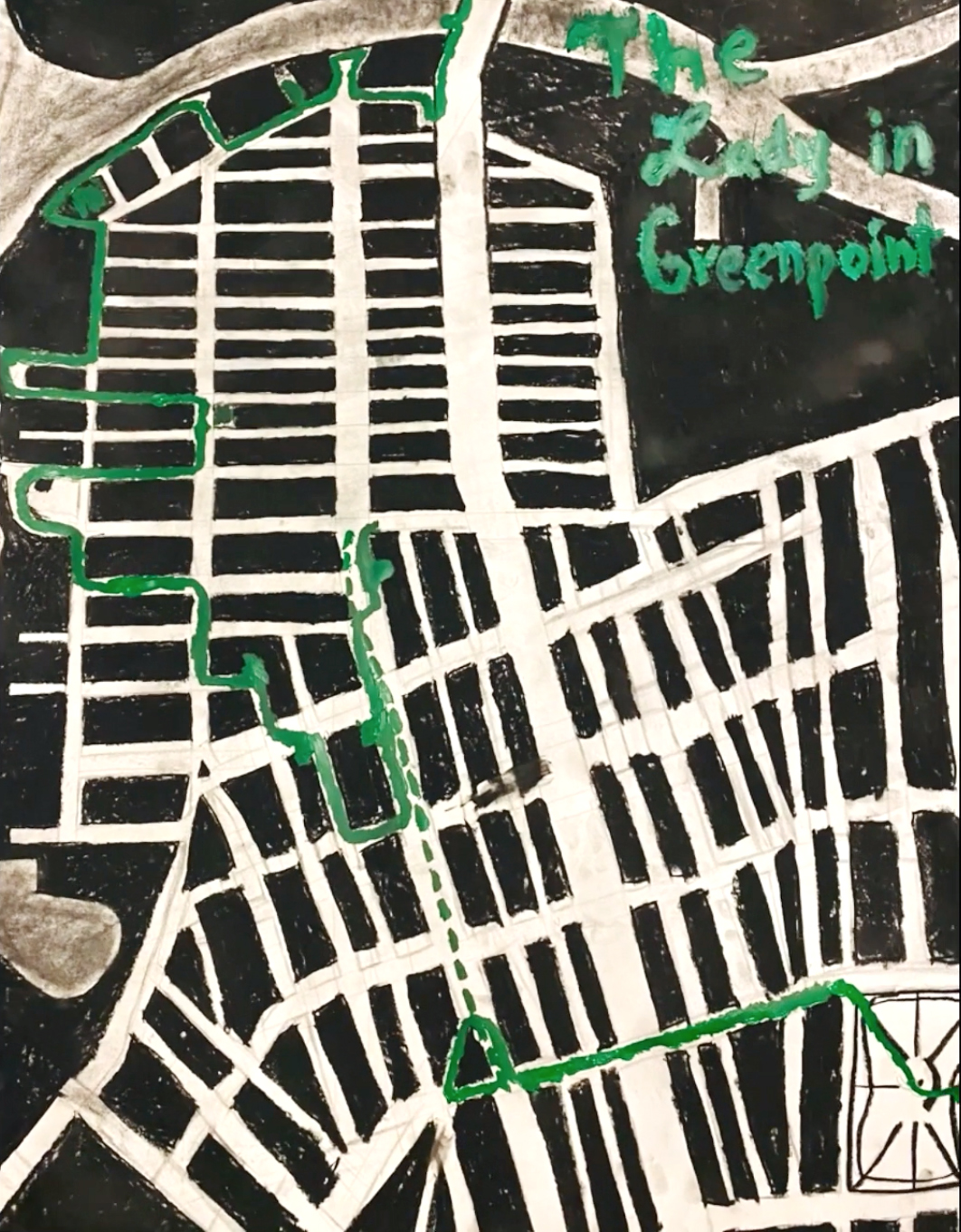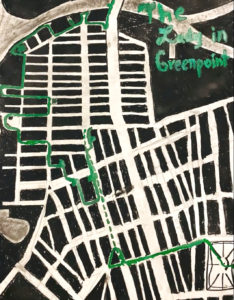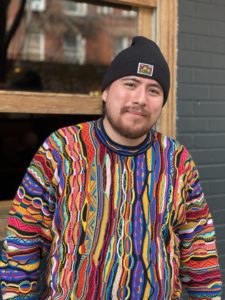By Melissa Hunter Gurney | news@queensledger.com
Editor’s Note: The following is a write-up that was solicited from a co-founder of the organization, Black Land Ownership, after receiving a press release about a current fundraising initiative:

In a little storefront, on an non-commercial block in Greenpoint, there is a community art space that’s been providing a stage for independent artists and marginalized communities to share their music, their poetry, their thoughts, and their movement since 2015. Most people have no idea that the storefront with the slogans “End Racism” and “Love Thy Neighbor” hanging boldly in the window is also a one-room schoolhouse and the Brooklyn office of Black Land Ownership.
Black Land Ownership owns 37 acres of land in Otsego County, N.Y., fifteen of which is in conservation, where they are building an Educational Eco Hub and Artists’ Residency. They are a grassroots organization put in place to combat the historical, systematic, and institutionalized marginalization experienced by people of African descent. The initiative is a call for change. An investment in the future of Black-owned land and, in turn, Black-owned community and Black-owned capital.
Christopher Banks Carr, one of the founders of Black Land Ownership, grew up in Takoma Park, Washington D.C., a predominantly Black-owned neighborhood that, 35 years later, is being met with change. Similar to many neighborhoods in New York City, the people moving in and buying up homes and businesses are no longer Black. His mom, a long-time lawyer at Howard University, bought her house in 1977 when the neighborhood was inhabited by Black professionals like her. Now, 40 years later, their house is in a different neighborhood than she moved into and she continually thinks about consolidation and change. The sale of a house being a family matter, she started talking to her only son Chris about what this process might look like. Chris’s immediate reaction was, “No, we can’t sell.” He said he needed his mom to understand that owning their home was larger than the two of them them and, although there were personal reasons that made him want to keep it, there were also societal ones.
Around the same time, Chris was traveling across the United States to share his art and learn about other places and other communities. In Nevada, New Mexico, and Arizona, he continually asked himself, “Where are we?”–the “we” being other Black folks. As a musician, he understood that space mattered and that having a safe space to gather with like-minded individuals was important. In Colorado, pulling up tubers on a friend’s farm, he was struck again by the vastness of the land and asked himself, “Who owns all of this?” To his surprise, it was not Black people. He wanted to find solutions—to work together, raise funds, and figure out how to generate revenue sustainably. In 2019, after both he and his partner were diagnosed with rare cancers back-to-back and he was undergoing treatment, everything he wanted to do came into sharp focus. He and Melissa Hunter Gurney, his co-founder, got to work.
It was then that they started researching, fundraising, and learning what it meant to purchase land. Their research, although specific to the Black community, very obviously revealed the need to raise awareness for other marginalized groups—women, trans people, indigenous people, immigrants—with limited resources or capital. Black Land Ownership, as an entity, is inclusive of these groups while simultaneously holding the belief that it is imperative to recognize the outrageous mistreatment and disparity aimed at Black people, not only in the U.S. but worldwide. It is BLO’s belief that people of African descent being landless or displaced is a phenomenon that has occurred anywhere colonialism has happened and is a clear and present human rights issue. Their goal is to make data more attainable and support land projects, educational initiatives and lobbying practices that work to call out the perpetuating narrative that land is a form of wealth relegated to certain groups in this country and beyond.
Their first purchase was a 15-acre conservation plot in Fly Creek, N.Y., completely funded by small grassroots fundraisers. Shortly after that, they purchased 22 acres, clearing out their personal savings. In the past few years, they have purchased 10 acres of wetlands in Mississippi, as well as two micro plots in Arkansas for a community garden and Black Memorial project.
What’s unique about Black Land Ownership is that they are truly community-oriented. They haven’t turned to corporate investors or partners. They have been working on the ground with folks who authentically want to support their specific mission and, although that is a much harder route, it has kept them grounded thus far. That said, they do have continuous fundraising initiatives that they hope will gain visibility and support across the board:
The Black Land Ownership Conservation Fund (BLOCF), which aims to raise funds in order to buy land while simultaneously ensuring that it cannot be developed and that the wildlife (flora and fauna) can exist unencumbered in perpetuity. Essentially, BLOCF works to promote the condition of the land’s natural state rather than the exploitation that very often comes with land use. All funds received to this end go towards the purchase of various properties that are protected wetlands, wildlife refuges, or conservation easements and cannot be turned into residential, industrial, or major commercial endeavors. The BLOCF purposefully shifts focus from having to extract resources out of the land purchased or running a business off the land purchased to ensuring that the land purchased will remain natural and pristine for generations to come.
There are several other initiatives—the Community Garden & Black Memorial Fund that aims to purchase micro plots across all 50 states, the Black Land Ownership Hiking and Camping Club, which aims to bridge rural and urban communities and create a network of safe, wild lands for marginalized groups to explore. There is also the Innovation, Research & Development Hub, which is their largest fundraising project, and aims to purchase 8-12,000 acres of land, which promotes a collaborative model to explore irrigation systems, natural building methods, forest gardening models, and essentially provides space and resources for Black innovators and creators.
Right now, in order to uplift all of these projects, they have started a GoFundMe to purchase a portable saw mill and turn a sector of their Eco Hub into a Woman & Black-Owned Community Mill for their eco hub. A portable saw mill will allow them to mill their own wood utilizing fallen trees from their properties as well as trees that need to come down in order to nourish forest growth. It allows them to build without toxins, to create unique green spaces for visitors and to offer community use for projects that highlight sustainable action and equitable land practices. The cost of wood has skyrocketed, forcing those who don’t fall within certain wealth brackets to build with unnatural, often toxic materials. They hope to uplift education on what it takes to mill wood, share invaluable tools throughout a community and unite in order to create earthen spaces that support the integration of humanity and nature and uplift their artistic and educational pursuits.
You can follow their work at the following:
Website: blacklandownership.com
Instagram: @Blacklandownership
Youtube: www.youtube.com/@blacklandownership







